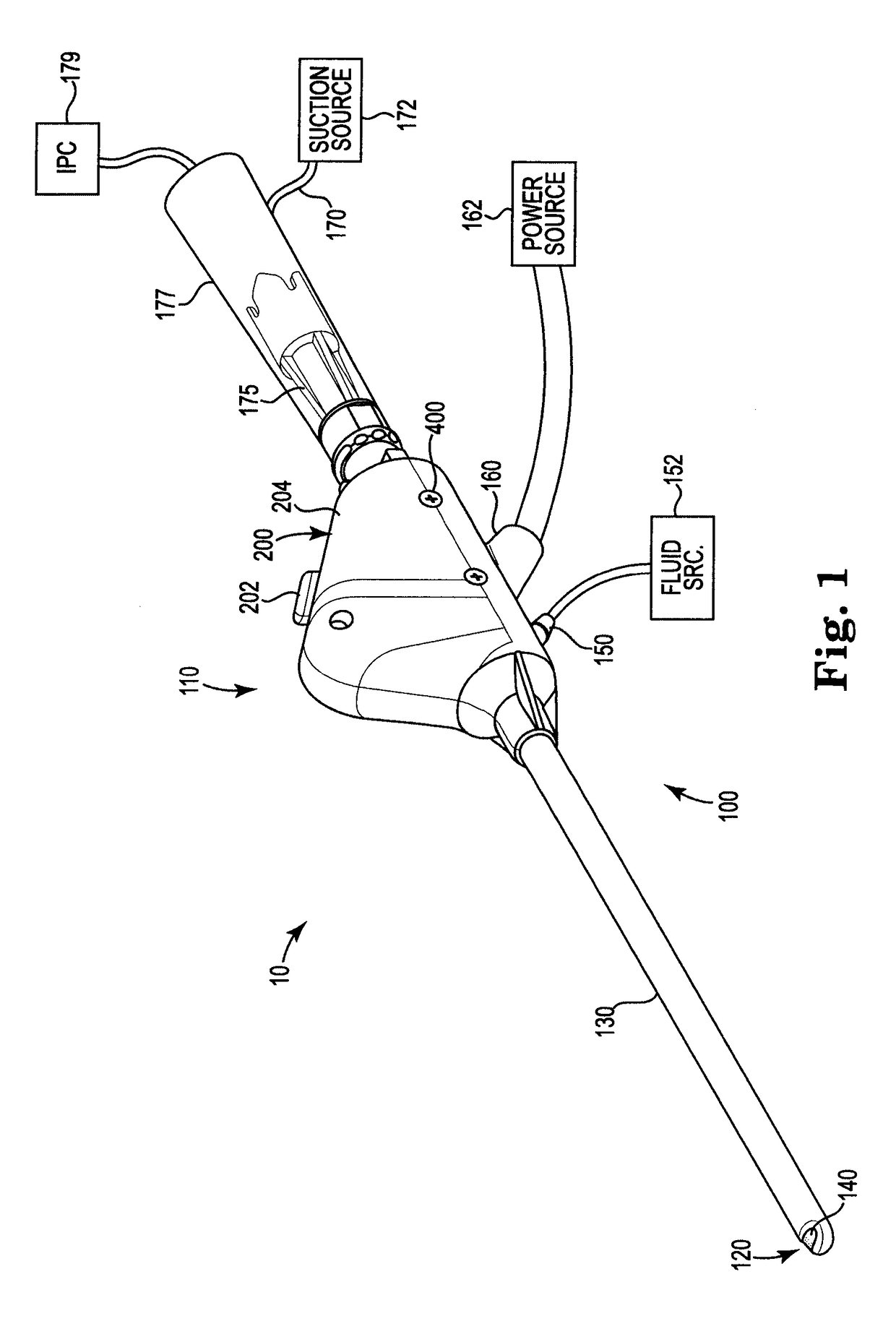Debridement device and method
a technology of a device and a device body, applied in the field of debridement devices and methods, can solve the problems of not including any mechanism for sealing tissue, complex typical procedures, and challenging sinus surgery
- Summary
- Abstract
- Description
- Claims
- Application Information
AI Technical Summary
Benefits of technology
Problems solved by technology
Method used
Image
Examples
Embodiment Construction
[0028]FIG. 1 illustrates a system 10 according to an aspect of the present invention. The system 10 includes a device 100 having a distal end region indicated generally at 120 and a proximal end region indicated generally at 110. The device includes an outer shaft 130 and an inner shaft 140 coaxially maintained within the outer shaft 130. A portion of the inner shaft 140 is shown in FIG. 1 at distal end region 120. Proximal end region 110 includes a button activation cell 200 comprising a housing 204 and a button 202, the proximal end region further comprising a hub 175 coupled to inner shaft 140. The hub is configured to couple to a handle or handpiece 177 which can be manipulated by a user (e.g., a surgeon). The handpiece 177, in turn may be coupled to an integrated power console or IPC 179 for driving the device 100 and specifically for controlling rotation of inner shaft 140. The IPC 179 may also include a fluid source (not shown) and may provide fluid delivery to device 100.
[00...
PUM
 Login to View More
Login to View More Abstract
Description
Claims
Application Information
 Login to View More
Login to View More - R&D
- Intellectual Property
- Life Sciences
- Materials
- Tech Scout
- Unparalleled Data Quality
- Higher Quality Content
- 60% Fewer Hallucinations
Browse by: Latest US Patents, China's latest patents, Technical Efficacy Thesaurus, Application Domain, Technology Topic, Popular Technical Reports.
© 2025 PatSnap. All rights reserved.Legal|Privacy policy|Modern Slavery Act Transparency Statement|Sitemap|About US| Contact US: help@patsnap.com



